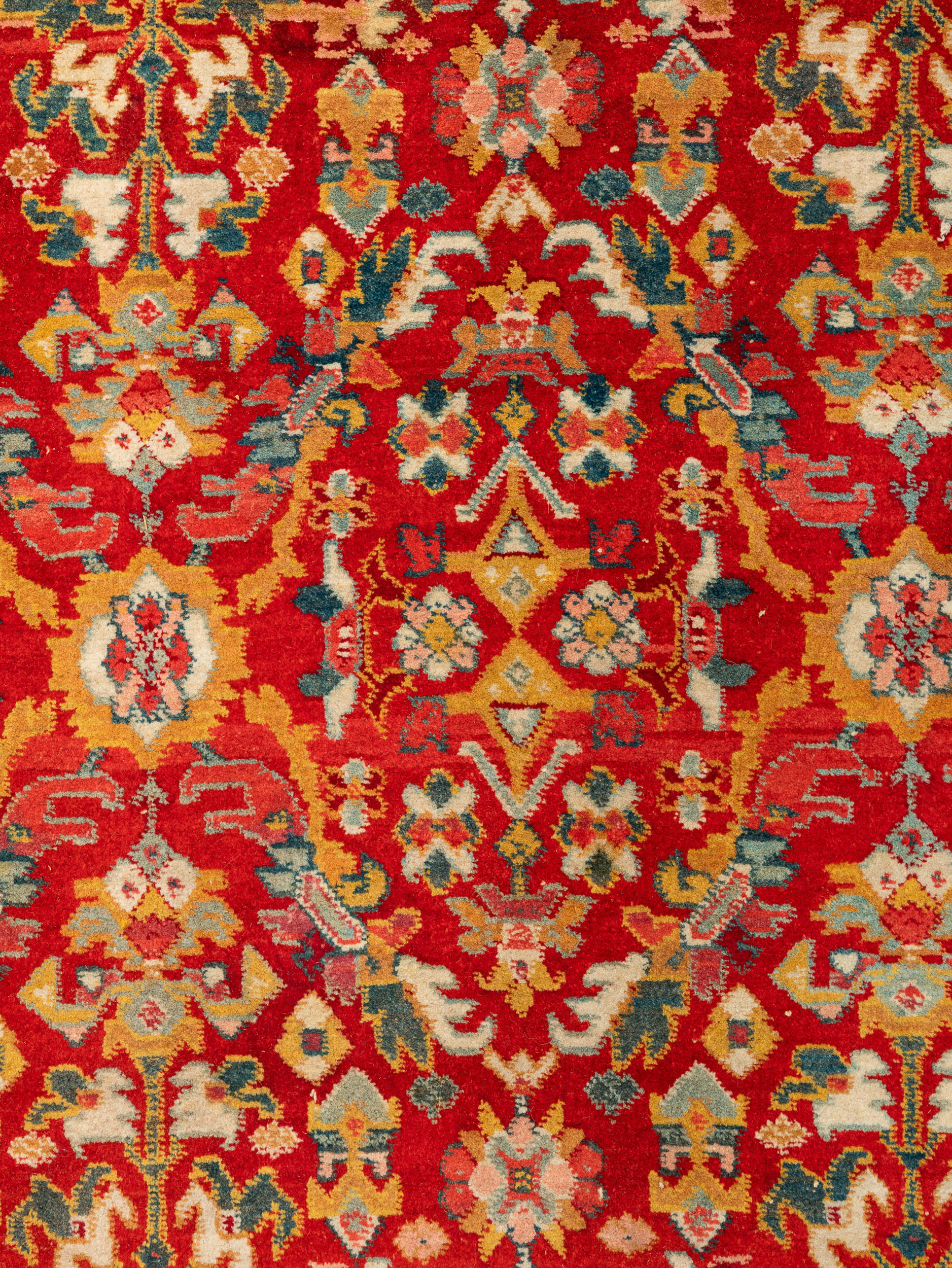An antique carpet or fabric gives us an insight into the history, taste and culture of a people who, in ancient times or more recent times, expressed their creativity and passion through weaving to create a unique object that transcends time.
The Compartment and tree design motif of a large carpet datable between 1750 and 1800 is simply enchanting. It depicts large plates with branches in green trunks and rich foliage. The central decoration is flanked by as many opposite half shields in the direction of the alternating colours, which create a combination of rare balance (lot 90 estimated price € 15,000 – 20,000): a rarity of textile art that will be sold together with 186 other lots in the web-only auction dedicated to Antique Rugs and Fabrics from 15 to 27 April 2022.
Valuable and worthy of the attention of the refined connoisseur is a large Indian decorative carpet from the city of Agra (lot 111, estimated price €12,000 – €16,000). Dating back to or before 1900, it displays a magnificent ivory border with a crown of alternating red vases and yellow leaves from which two large green peppers hang, one on each side. The imposing border is flanked on both sides by four smaller bands running around the carpet. The magnetic fiery red field hosts a complex continuous pattern of small flowering trees, large yellow flowers and geometric shapes that seem to form an octagon: a rarity that only noblemen and Radja could afford in those days.
A very fine Senneh in silk on silk from Persia (lot 68, estimated price €8,000 – €10,000) from around 1900 stands out. It is a masterpiece of knotted Persian art, perfectly preserved and with unique characteristics: a rare fineness, the high quality of the silks used, the natural colours and the complexity of the decoration depicting the “European flower” or “Gol-Farang”, a design that was quite popular at the beginning of the 20th century.
For true enthusiasts, the carpet with ‘Sikh Kababi’ motif dating back to the possible Sauj Bulagh group from Eastern Kurdistan (lot 89, estimated price €8,000 – €10,000), around 1860. The great tribal flavour conveyed by the serrated leaf grids immediately stands out. It was typical of the oldest carpet models, which appeared for the first time in the workshops of the Ottoman Court of Istanbul shortly after the Turkish invasion of 1453. The piece for sale (440X178 cm) has a rare saffron yellow ground and is decorated by the cross-leaf pattern, known as Sikh Kababi, used by Persian carpet dealers because of its similarity to minced meat skewers. The design also features three longitudinal lines that resemble slender trees with large octagonal and multicoloured flowers. Lastly, countless zoomorphic shapes can be admired.



















